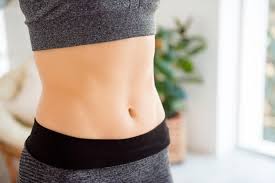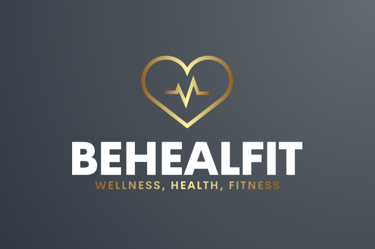Abs After 40: The Ultimate Guide to Naturally Losing Belly Fat
Men over 40: Learn to lose belly fat! Discover the 6 key pillars to boost your testosterone, metabolism, and health for a leaner, healthier you.
HEALTHBLOG-LIST
8/5/20254 min read


In Brief
The forties mark a turning point for many men: metabolism slows down, fat loss becomes more difficult, and belly fat seems to settle in more easily. This is not a foregone conclusion, but a natural reaction to hormonal changes. Aging is not the enemy, but the signal of a need to adapt your strategies. This article, inspired by an expert guide, reveals the 6 essential pillars to regain a leaner physique and optimal health after 40. Far from drastic diets and excessive cardio, discover how to optimize your testosterone, sleep, and diet for sustainable and healthy weight loss.
Table of Contents
Why Does Belly Fat Settle in After 40?
The Hormonal Key: Testosterone and Weight Loss
The 6 Pillars to Effectively Lose Belly Fat
Movement: Prioritize Strength Training
The Crucial Importance of Quality Sleep
The Smart and Sustainable Caloric Deficit
Nutrition in Service of Fat Loss
Daily Movement (NEAT)
Deficit Cycling: A Tool Against Stagnation
Testimonial: From Frustration to Success
Frequently Asked Questions (FAQ) About Belly Fat Loss
Conclusion: A Commitment, a New Life
9 Strange Signs You're Actually Healthier Than You Think!
1. Why Does Belly Fat Settle in After 40?
For many men, their thirties and forties mark the appearance of stubborn fat around the abdomen. This fat, stored near vital organs, is an ancient survival mechanism. The body considers it a "precious reserve" that it uses last. However, with constant access to food, and especially ultra-processed foods, our bodies store more than they burn, creating this surplus of abdominal fat.
2. The Hormonal Key: Testosterone and Weight Loss
Around age 35-40, a man's testosterone production naturally begins to decline. This hormone is vital for muscle mass, metabolism, libido, and energy. Its decline makes fat loss harder, as it leads to muscle loss, a slower metabolism, and increased fat storage, particularly in the belly area. Sedentary behavior, chronic stress, a poor diet, and lack of sleep can accelerate this decline.
3. The 6 Pillars to Effectively Lose Belly Fat
Here are proven strategies to reverse the trend and reboot your metabolism.
1. Movement: Prioritize Strength Training
The problem: Many people think that excessive cardio is the solution. In reality, too much cardio can increase cortisol (the stress hormone), which inhibits testosterone and promotes fat storage.
The solution: Strength training is the key. It is less stressful on the hormonal system, stimulates natural testosterone production, and promotes muscle growth. More muscle means a higher resting metabolism, which burns more calories at rest.
The advice: Aim for 2 to 3 strength training sessions per week, focusing on compound movements (squats, lunges, push-ups, rows, dips, pull-ups). Cardio is still beneficial for cardiovascular health, but should not be the primary focus for fat loss.
2. The Crucial Importance of Quality Sleep
The principle: The majority of testosterone production occurs during deep sleep. Poor sleep increases cortisol, disrupts hunger hormones, and decreases insulin sensitivity, all of which lead to fat storage.
The advice: Create a strict sleep routine. Go to bed and wake up at regular times, avoid screens 60 to 90 minutes before bed, have dinner 2 to 3 hours before bed, and sleep in a cool (18-19°C), dark room.
3. The Smart and Sustainable Caloric Deficit
The principle: Fat loss requires a caloric deficit, meaning you consume fewer calories than you burn.
The mistake to avoid: A drastic deficit slows down your metabolism, increases hunger and stress, and leads to muscle loss and the yo-yo effect.
The advice: Create a slight deficit of 200 to 300 calories per day compared to your maintenance needs (TDEE). Observe the results: if you lose 0.5 to 1% of your body weight per week, you are on the right track.
4. Nutrition in Service of Fat Loss
Protein: Aim for 1.5 to 2 g of protein per kg of lean body mass. Protein preserves muscle, increases satiety, and burns more calories during digestion.
Carbohydrates: Prioritize complex, fiber-rich carbohydrates (brown rice, sweet potatoes, legumes). Consume them preferably around your workouts, when your body is most sensitive to insulin.
Healthy fats: Quality fats are essential for hormone production, including testosterone. Eat whole eggs, avocado, nuts, and fatty fish (sardines, mackerel).
5. Daily Movement (NEAT)
The principle: Non-exercise activity thermogenesis (NEAT) plays a major role. Walking is the least stressful way to increase calorie expenditure without a negative impact on hormones.
The advice: Set a goal of 8,000 to 10,000 steps per day. Walk during your calls, park farther away, take the stairs, or take short walks after meals.
6. Deficit Cycling: A Tool Against Stagnation
The problem: After several weeks of a deficit, the body adapts: metabolism slows down, hunger increases, and weight loss plateaus.
The solution: Deficit cycling. Return to your maintenance calories for 1 to 2 weeks to reset your hormones and reboot your metabolism. You can then start a new deficit cycle with a "recharged" body.
4. Testimonial: From Frustration to Success
"At 45, I was frustrated. I was doing cardio, eating 'healthy,' but the belly fat wouldn't go away. I discovered the video and completely changed my approach. I traded my long running sessions for strength training 3 times a week and started following the advice on sleep and nutrition. I also learned to calculate my caloric deficit gradually. In three months, the transformation was incredible. I lost the belly fat, but most importantly, I regained my energy and vitality. The key was understanding that I had to work with my body, not against it." – Mark, 45 years old
How Staying Active After 40 Protects Your Brain from Decline
5. Frequently Asked Questions (FAQ) About Belly Fat Loss
Can exercise alone get rid of belly fat? No. Exercise is crucial, but nutrition and a caloric deficit are the main drivers of fat loss. Your entire lifestyle matters.
Are crunches enough to lose abdominal fat? No. Crunches strengthen the abdominal muscles, but do not target local fat loss. Fat loss is a global process.
Is it really important to get more sleep to lose weight? Yes, absolutely. Sleep is one of the keys to balancing hormones that regulate fat storage, hunger, and metabolism. Without enough sleep, all your efforts can be compromised.
Do I have to cut out carbs to lose weight? No, you don't have to cut them out. You have to choose them wisely (complex carbohydrates) and consume them at the right time (around your workouts). They are an essential source of energy.
6. Conclusion: A Commitment, a New Life
Belly fat loss after 40 is not a struggle, but a readjustment. By understanding your body's hormonal changes and adopting the 6 pillars of strength training, sleep, a smart deficit, nutrition, daily movement, and cycling, you can regain control of your health. These strategies are not a quick fix, but a path to a healthier and more sustainable lifestyle. Commit to this process, and discover the best version of yourself.
